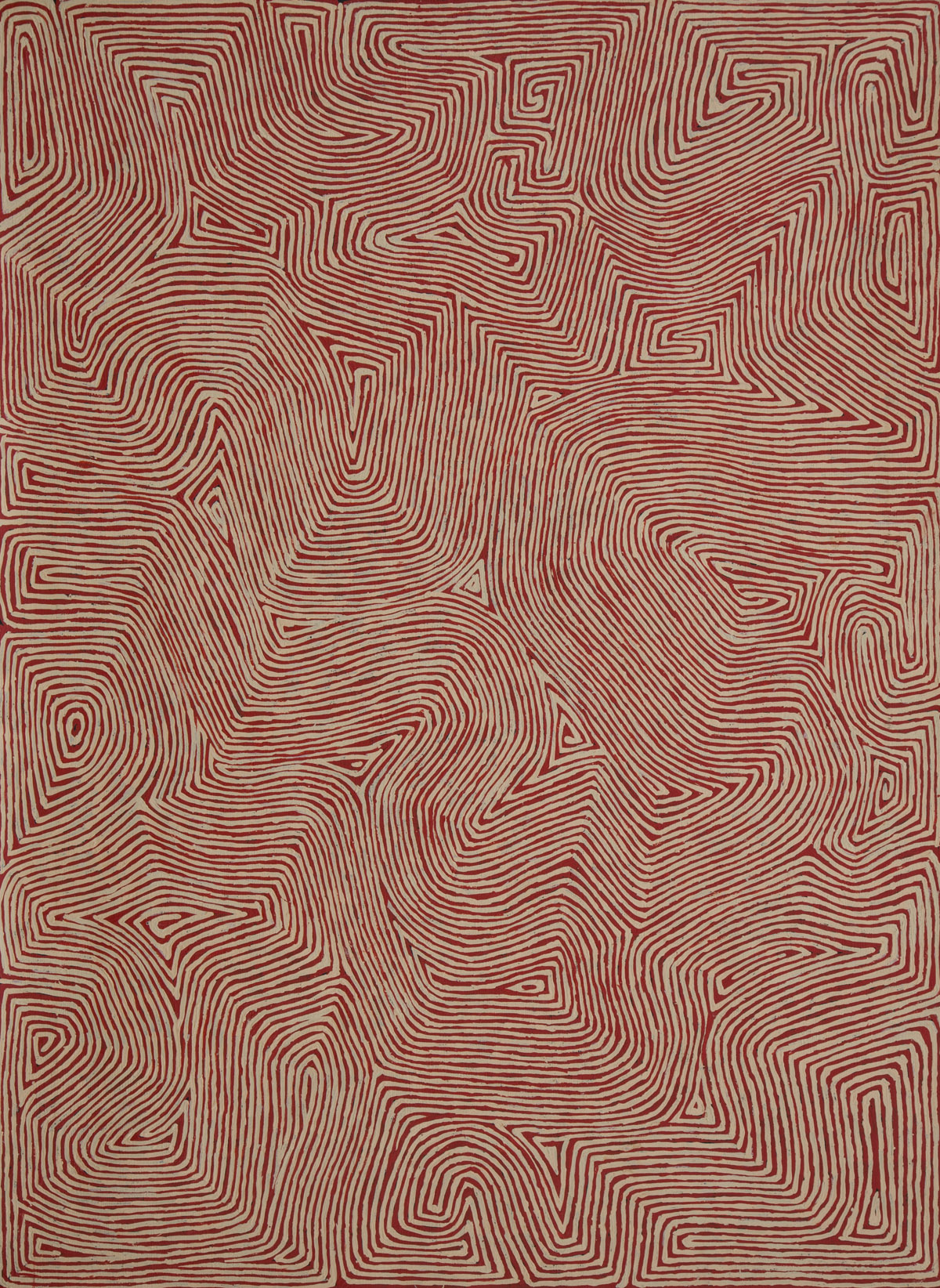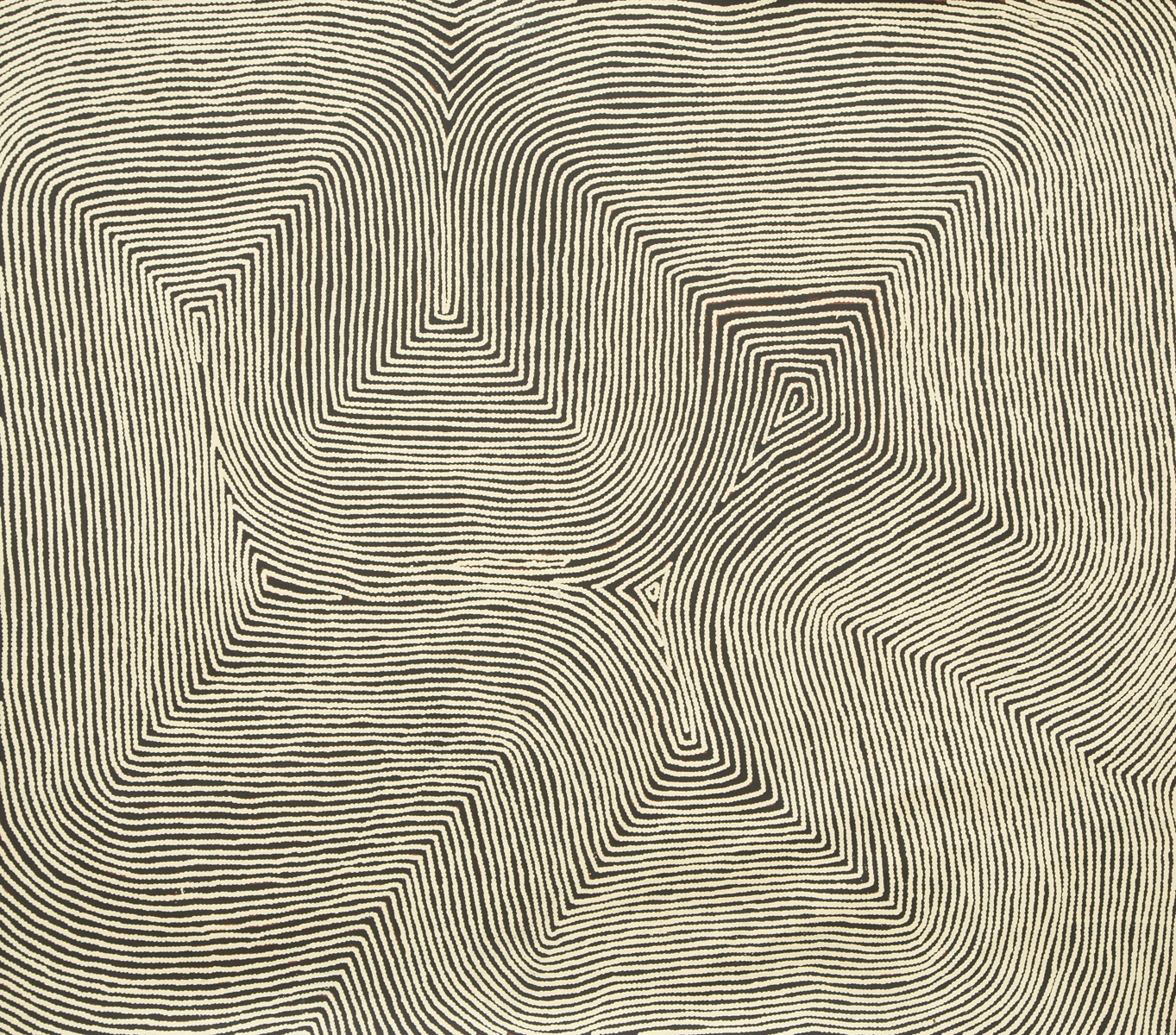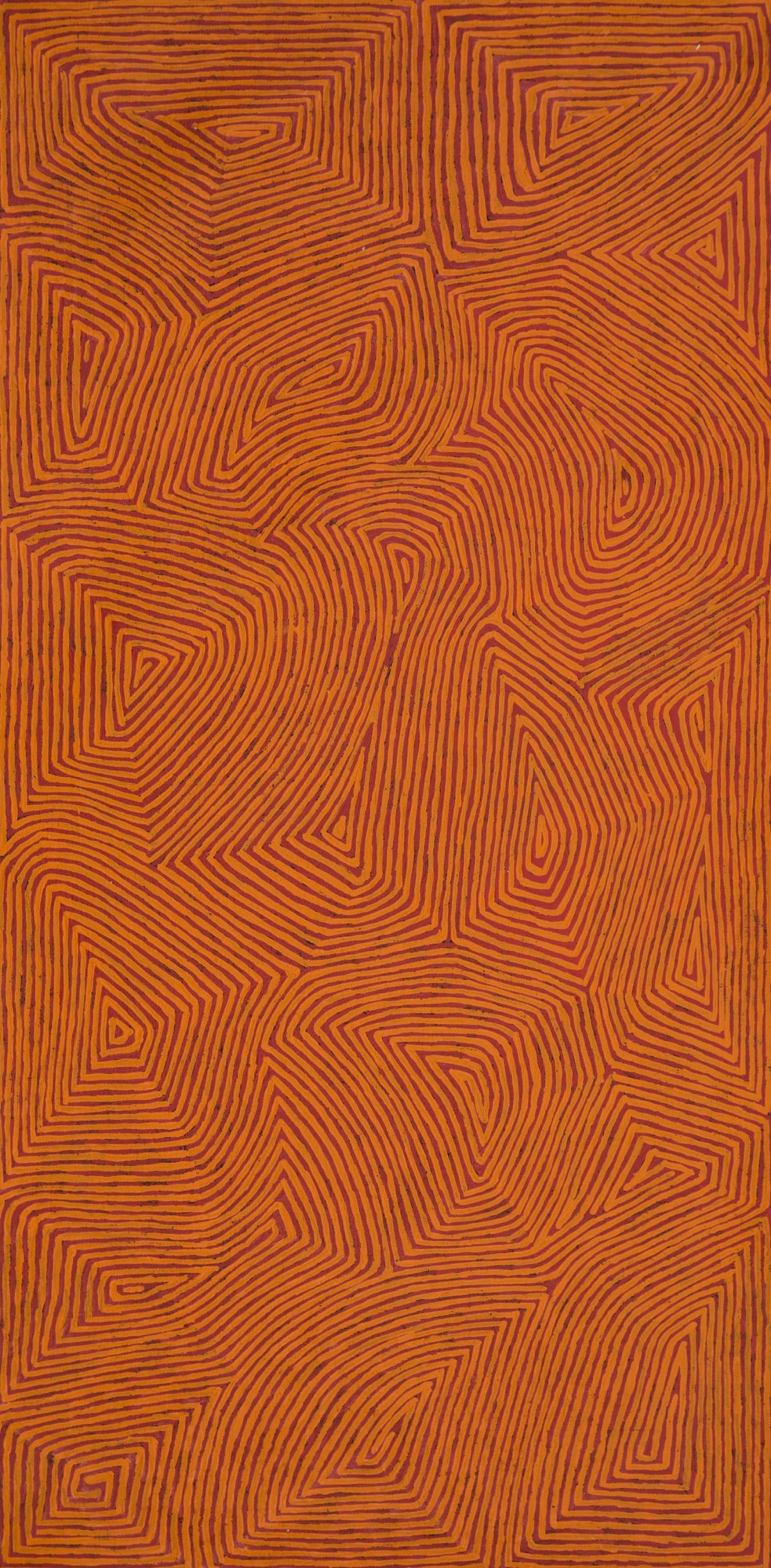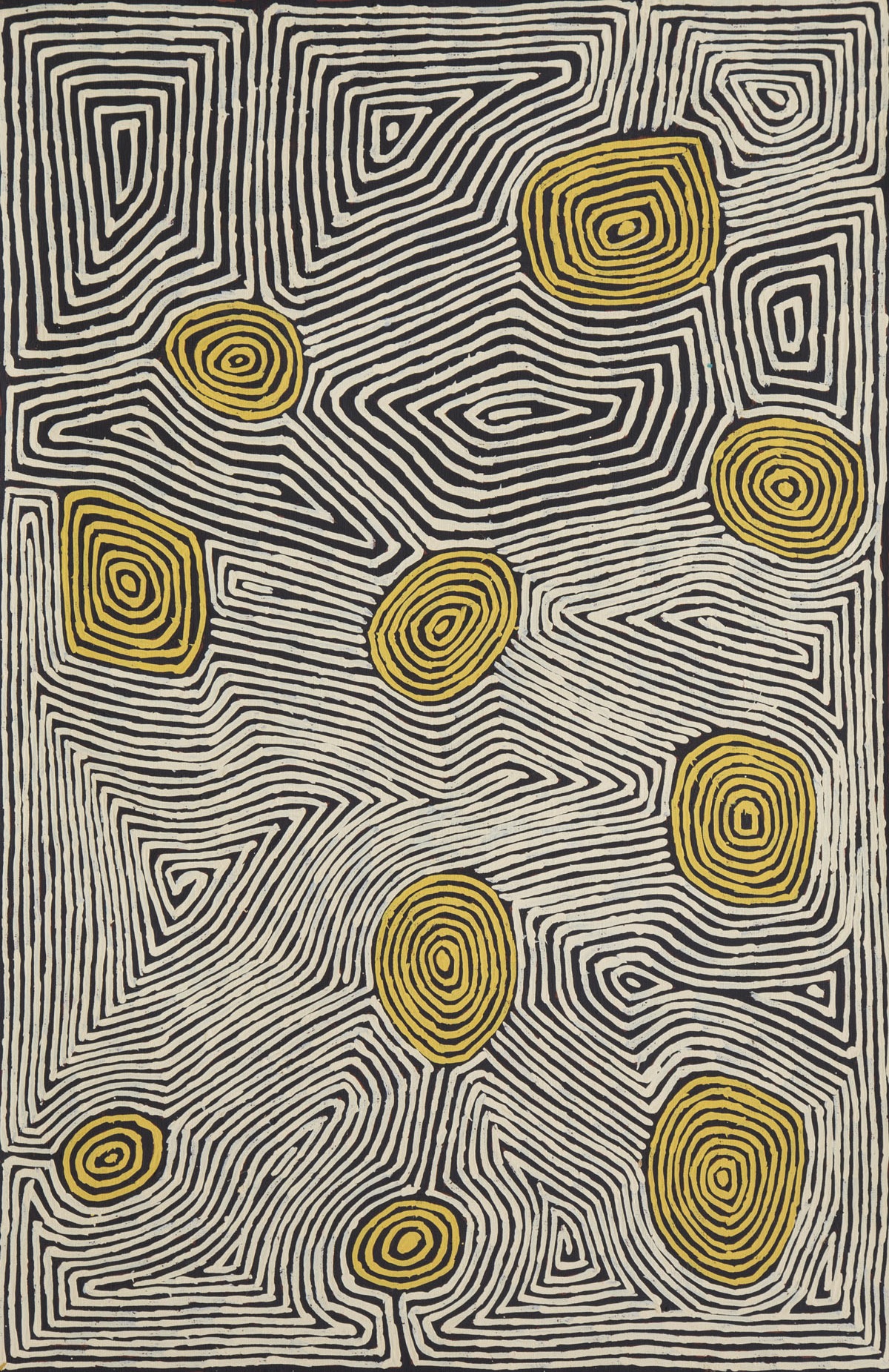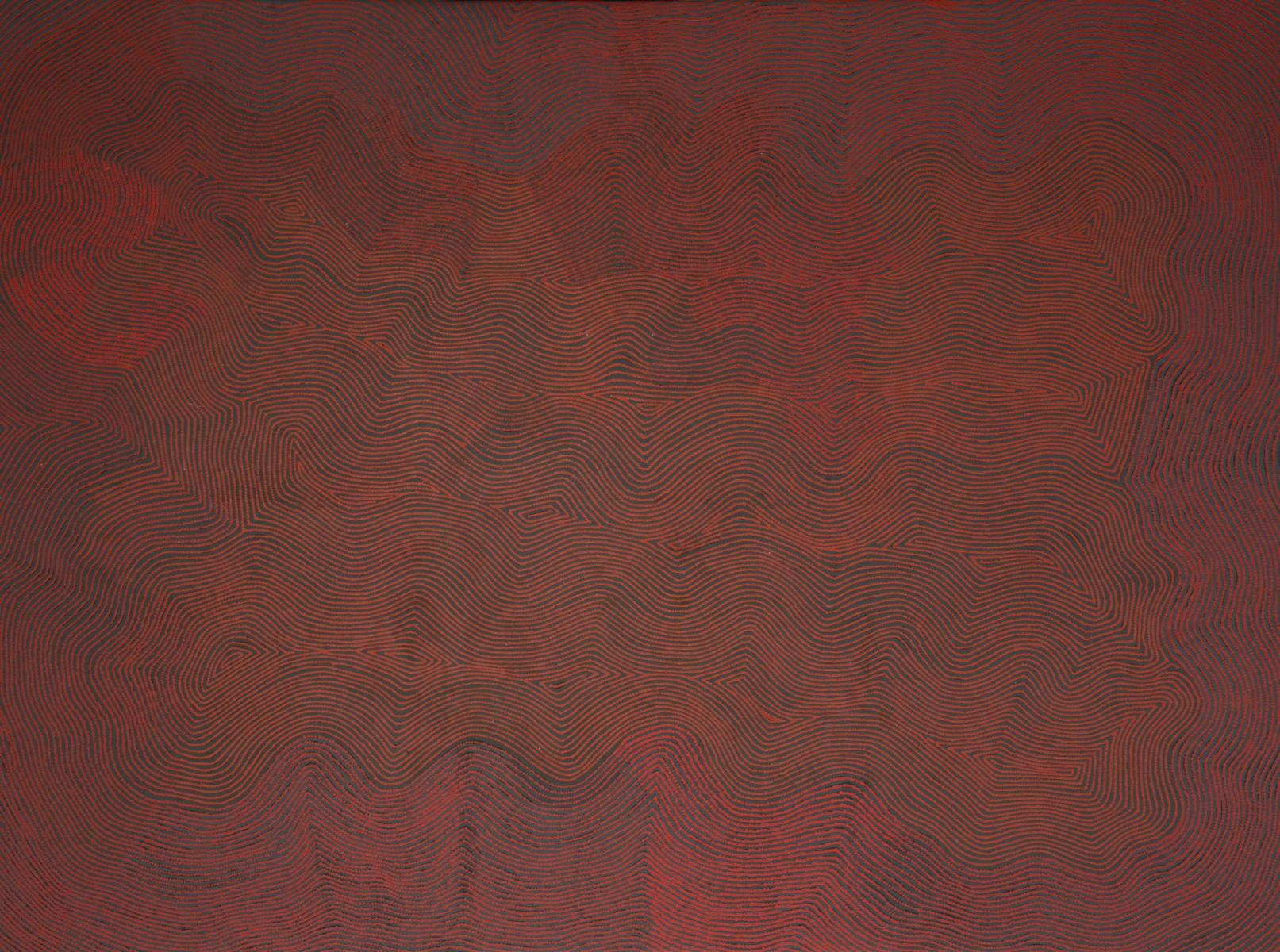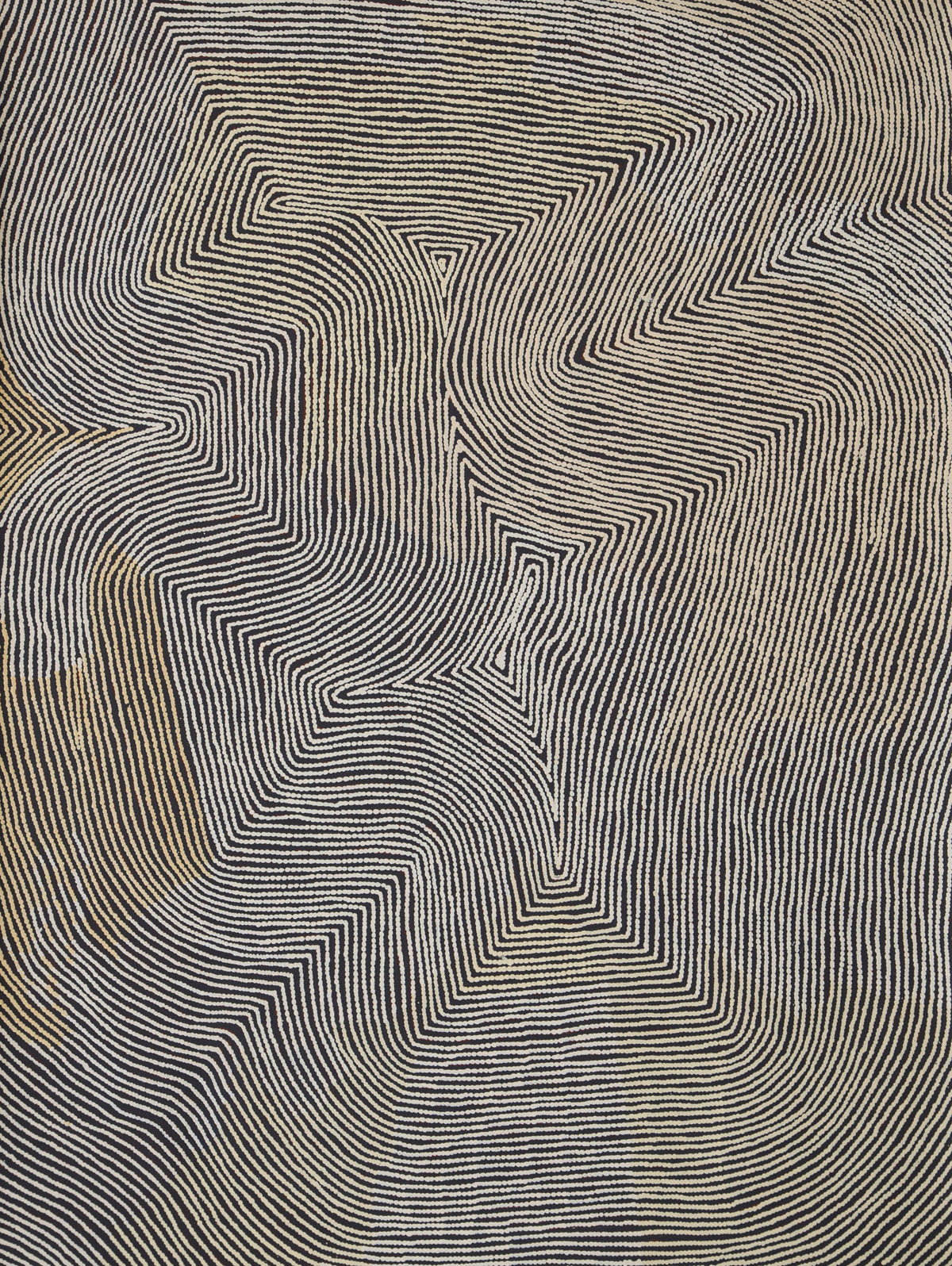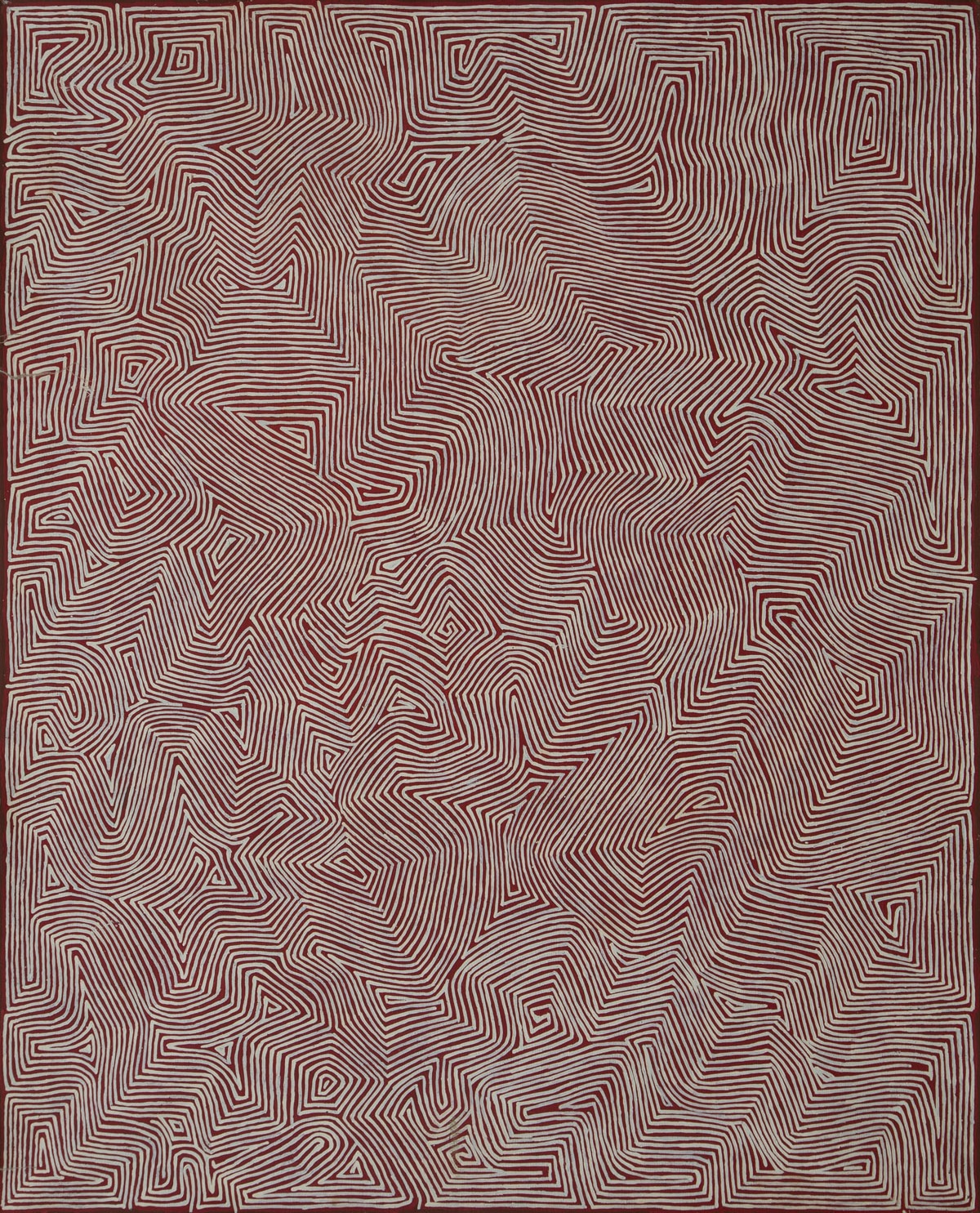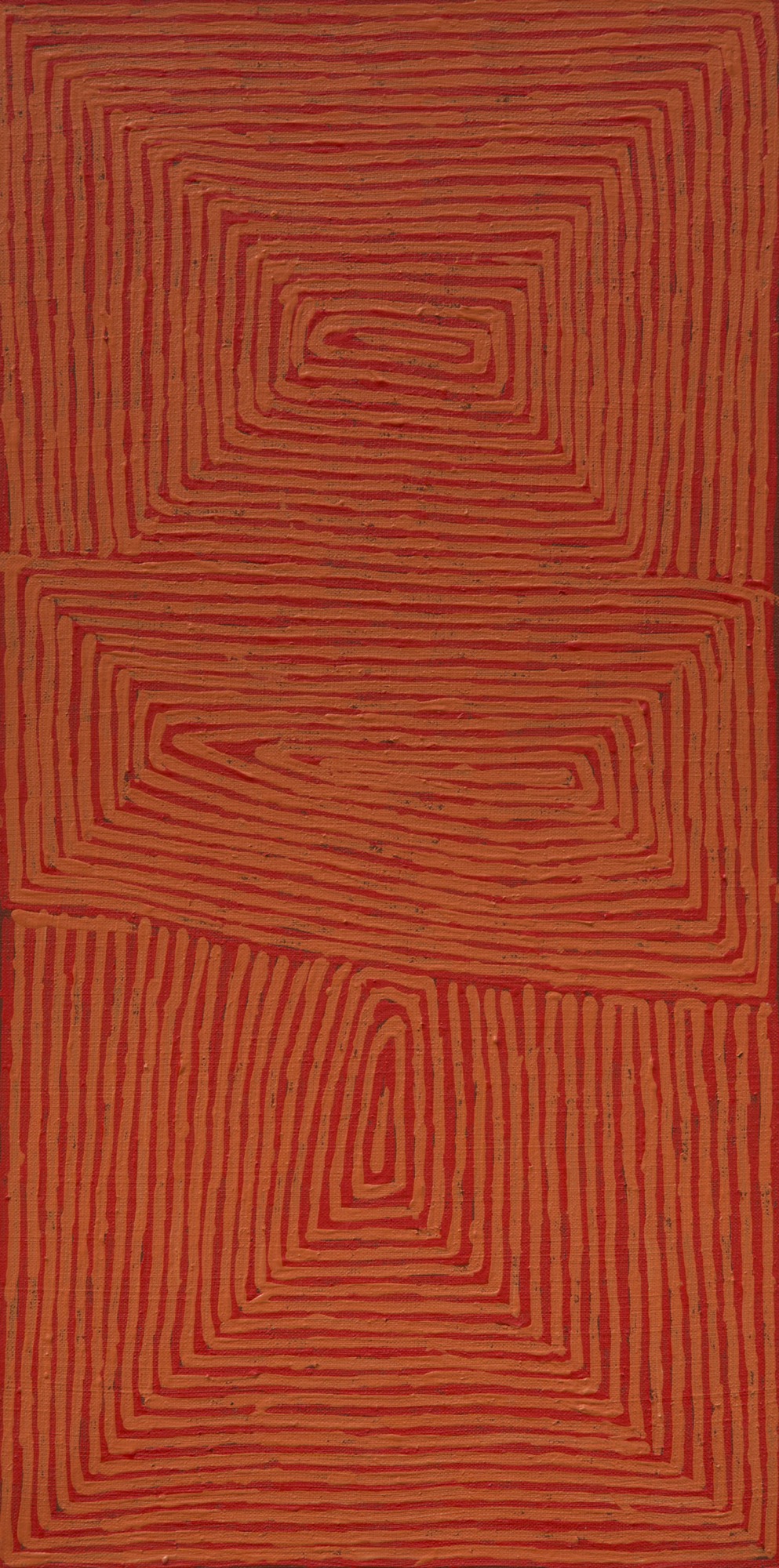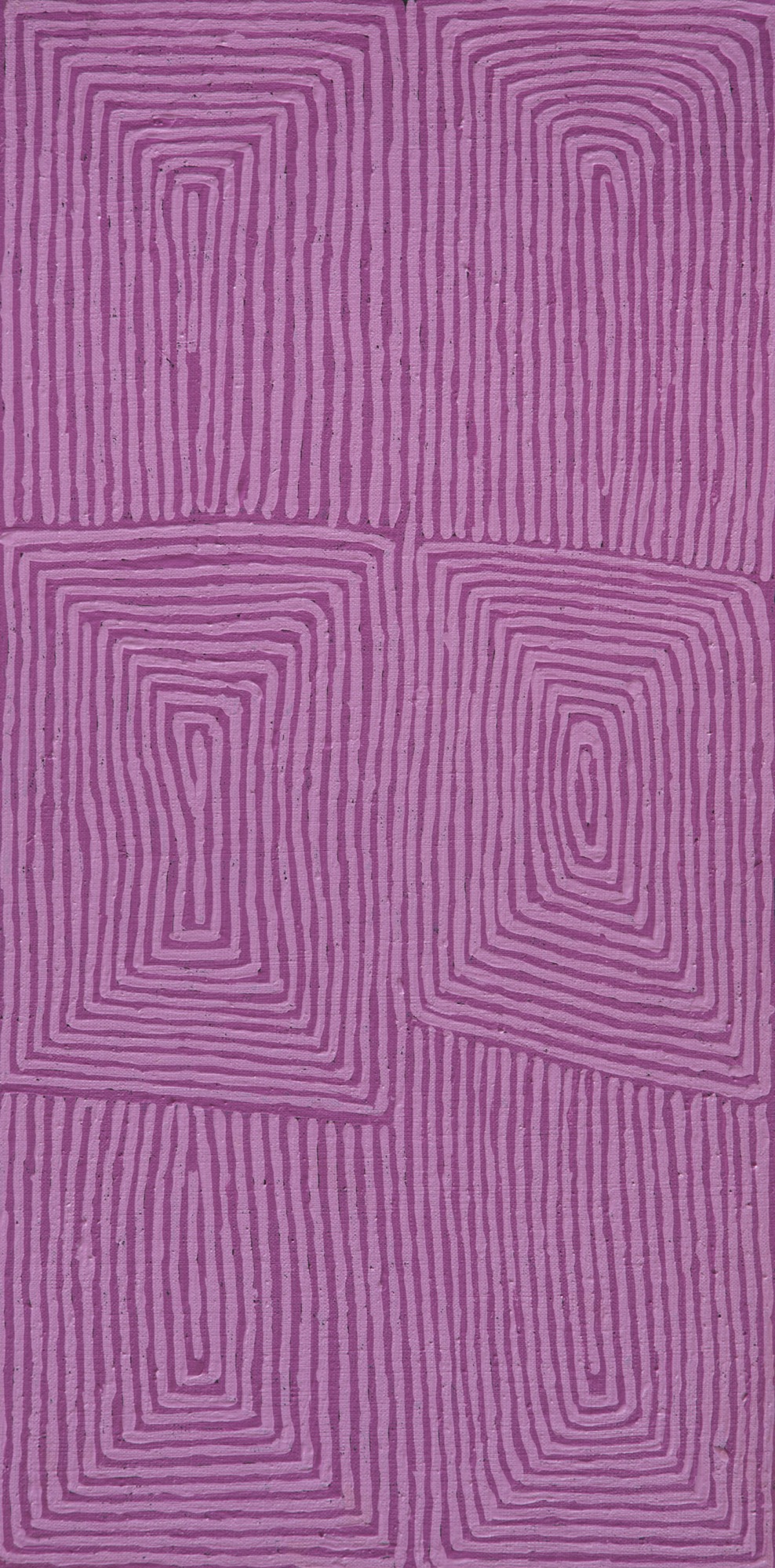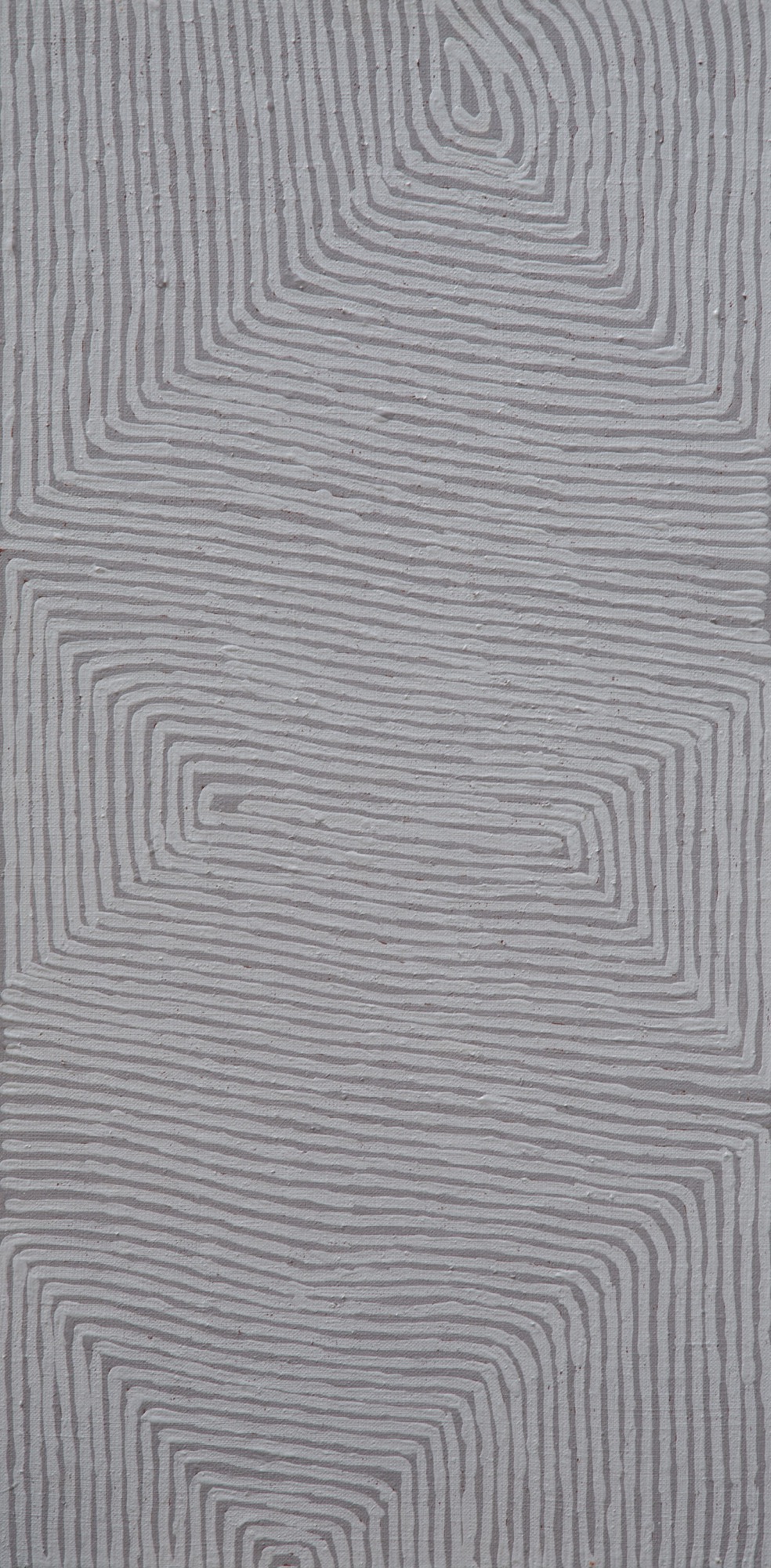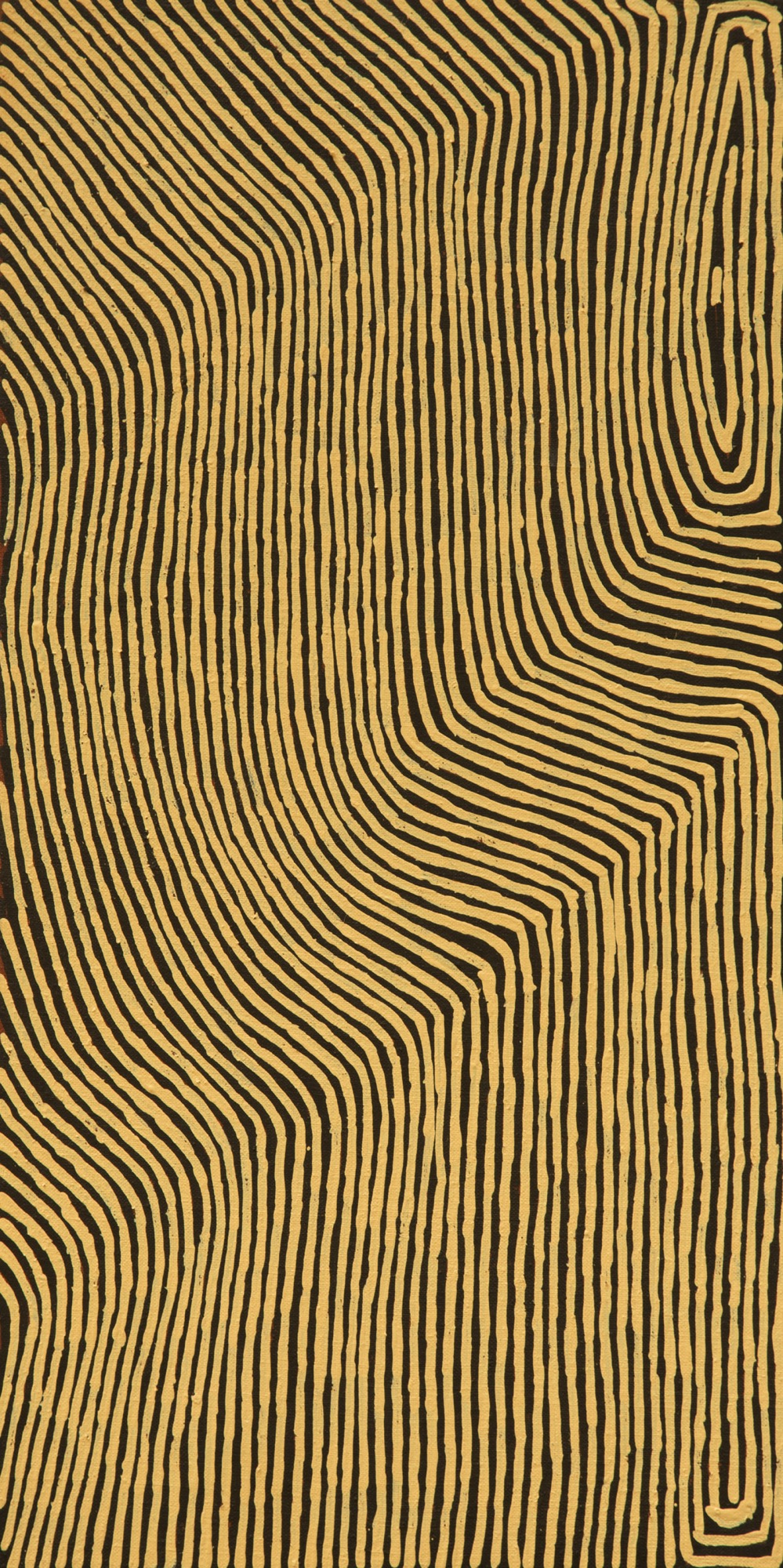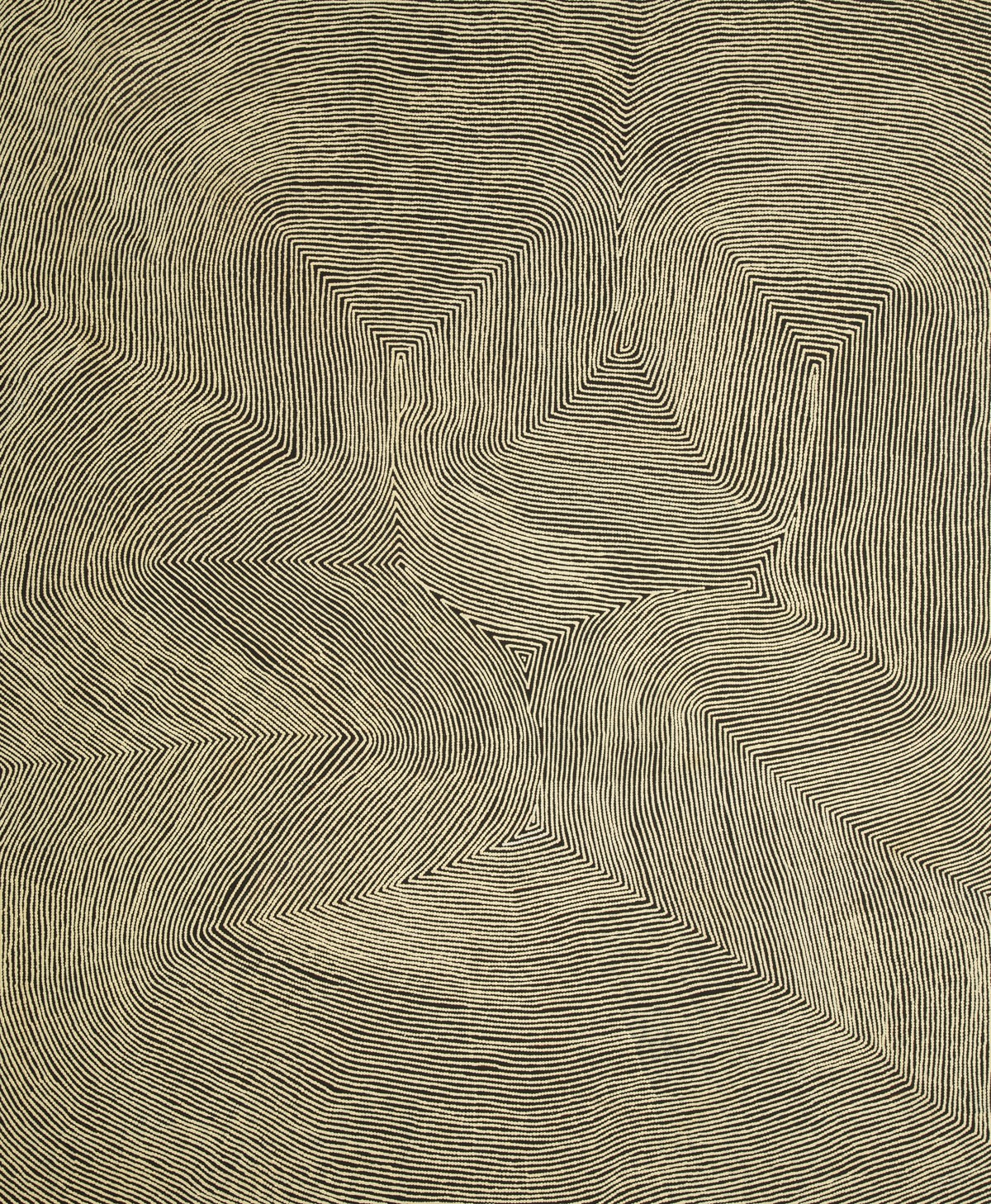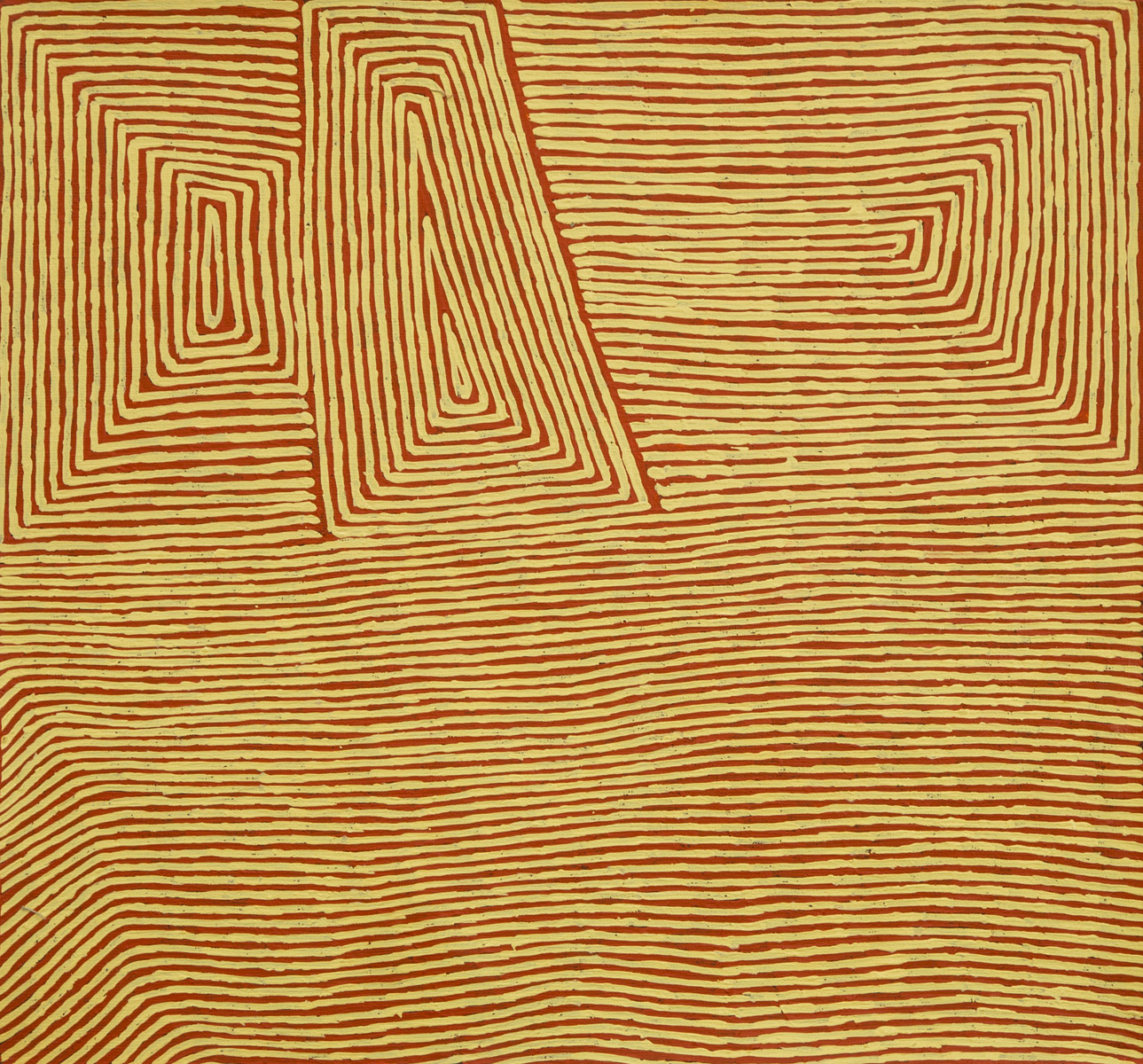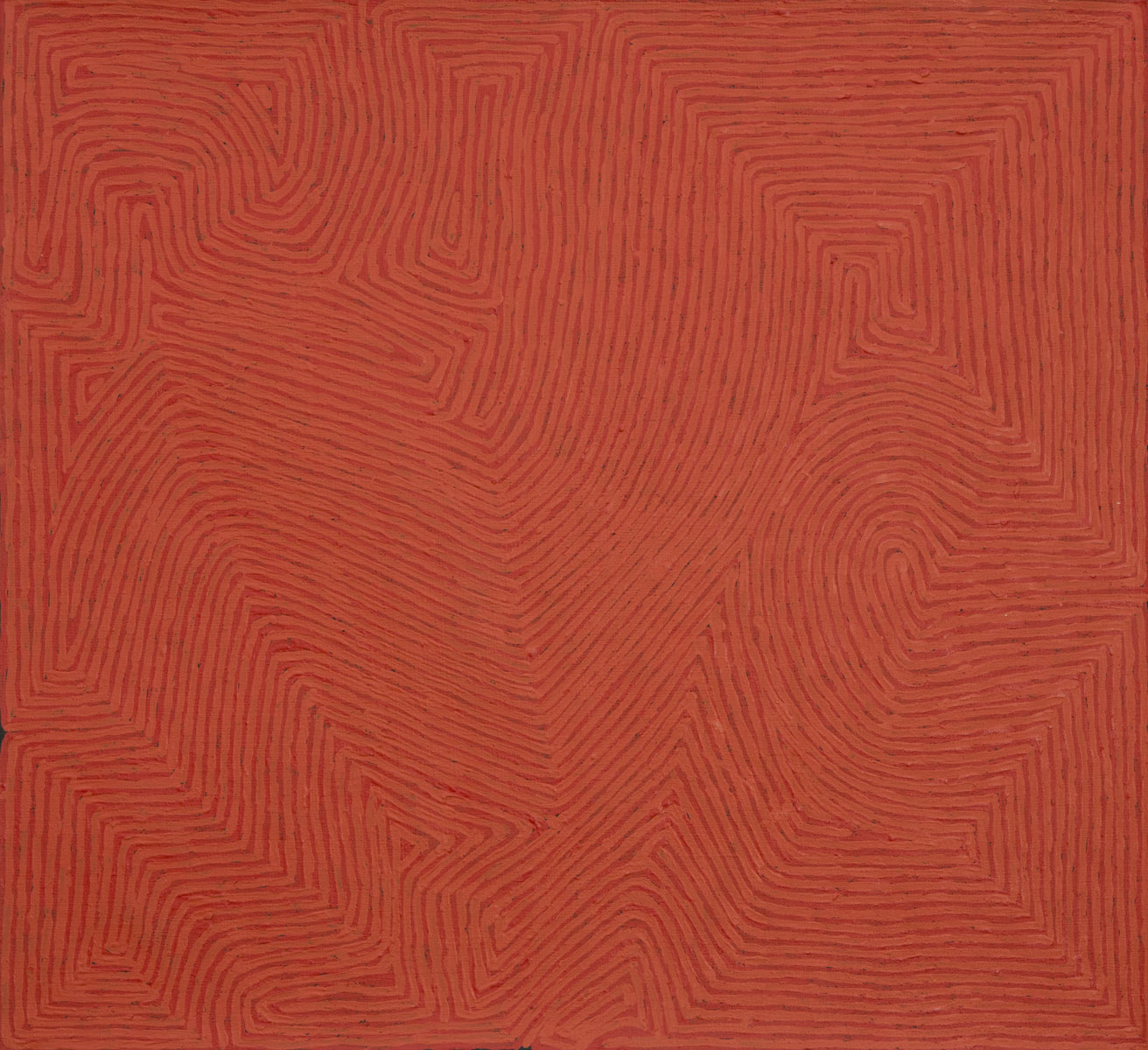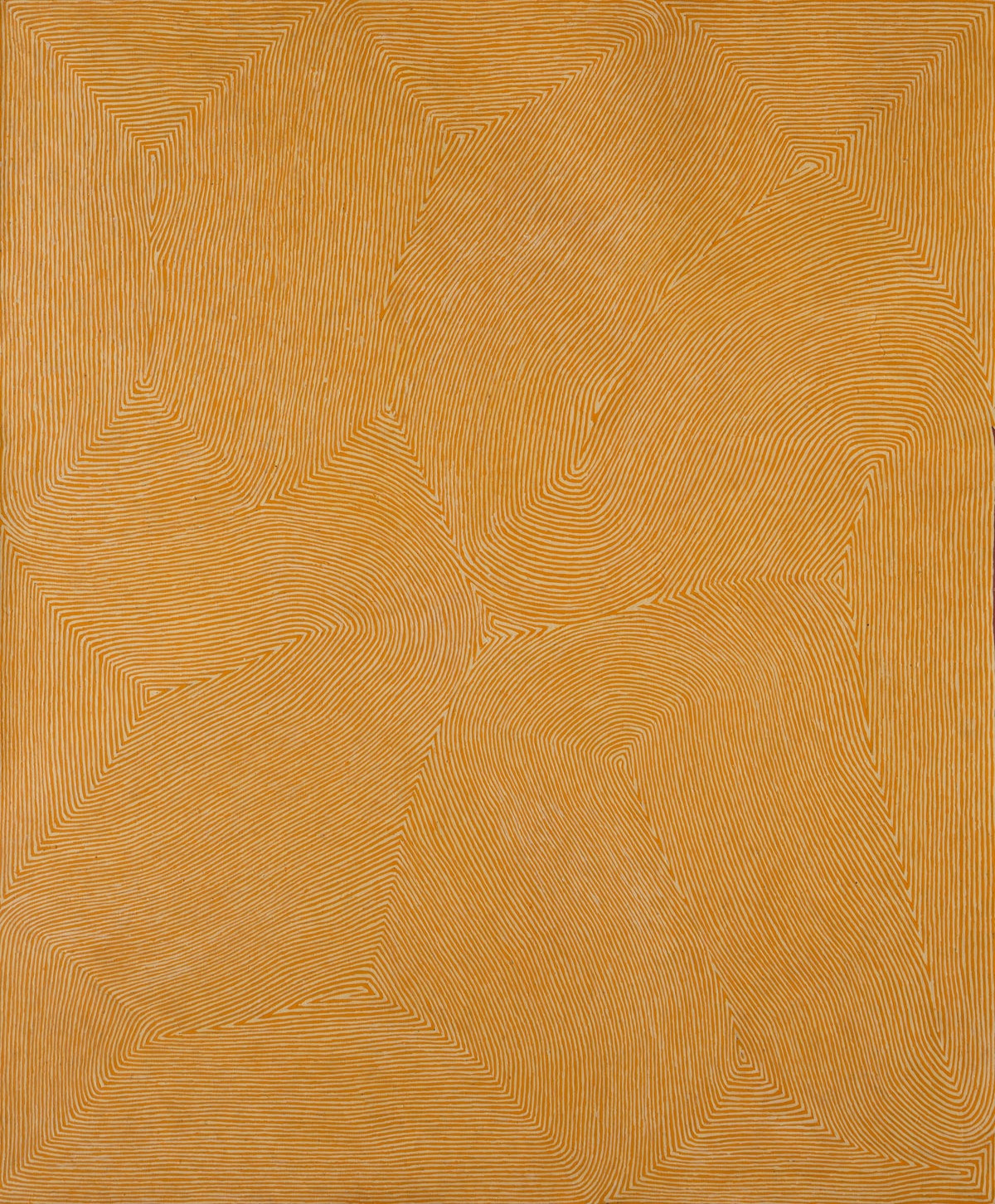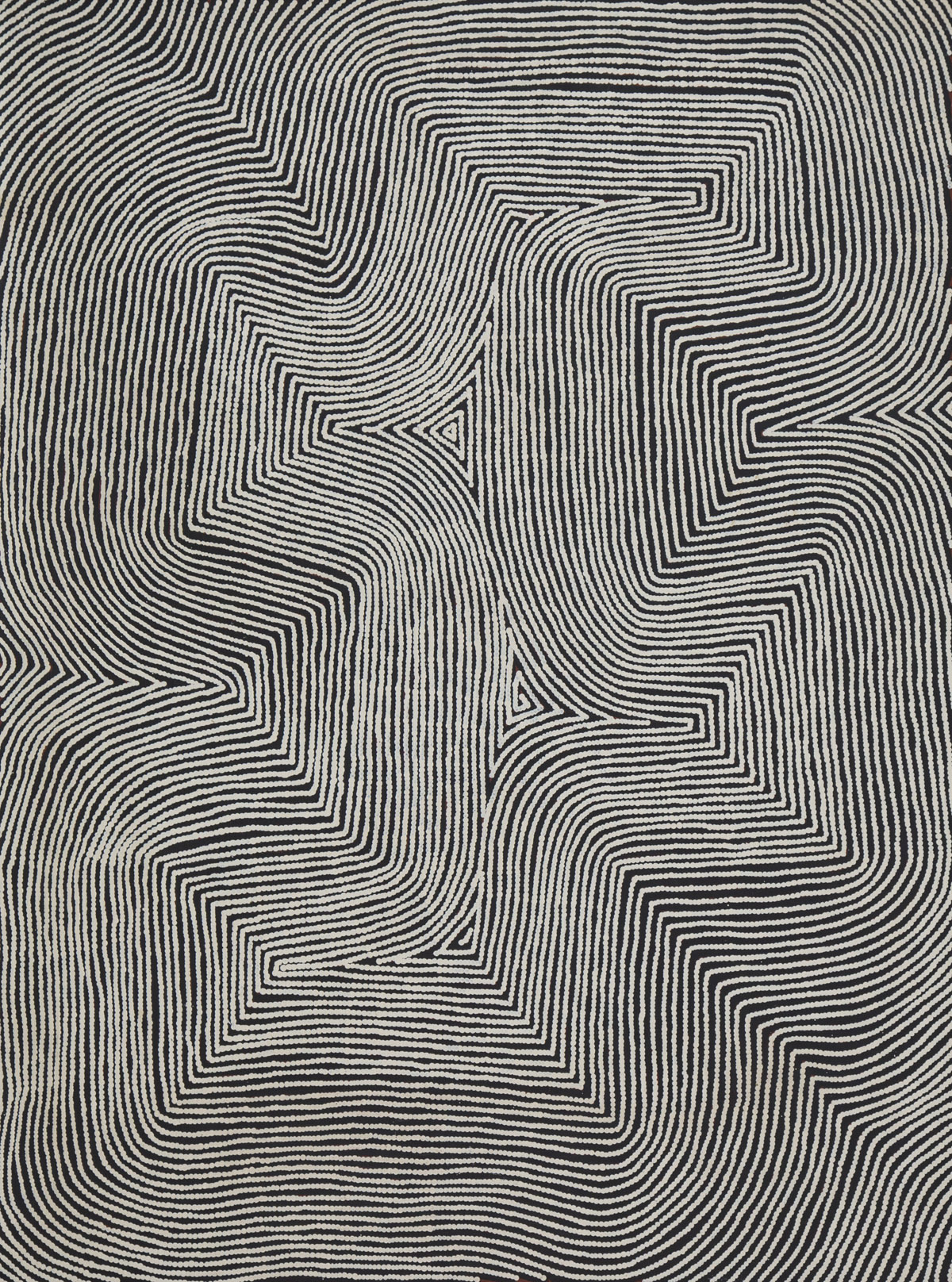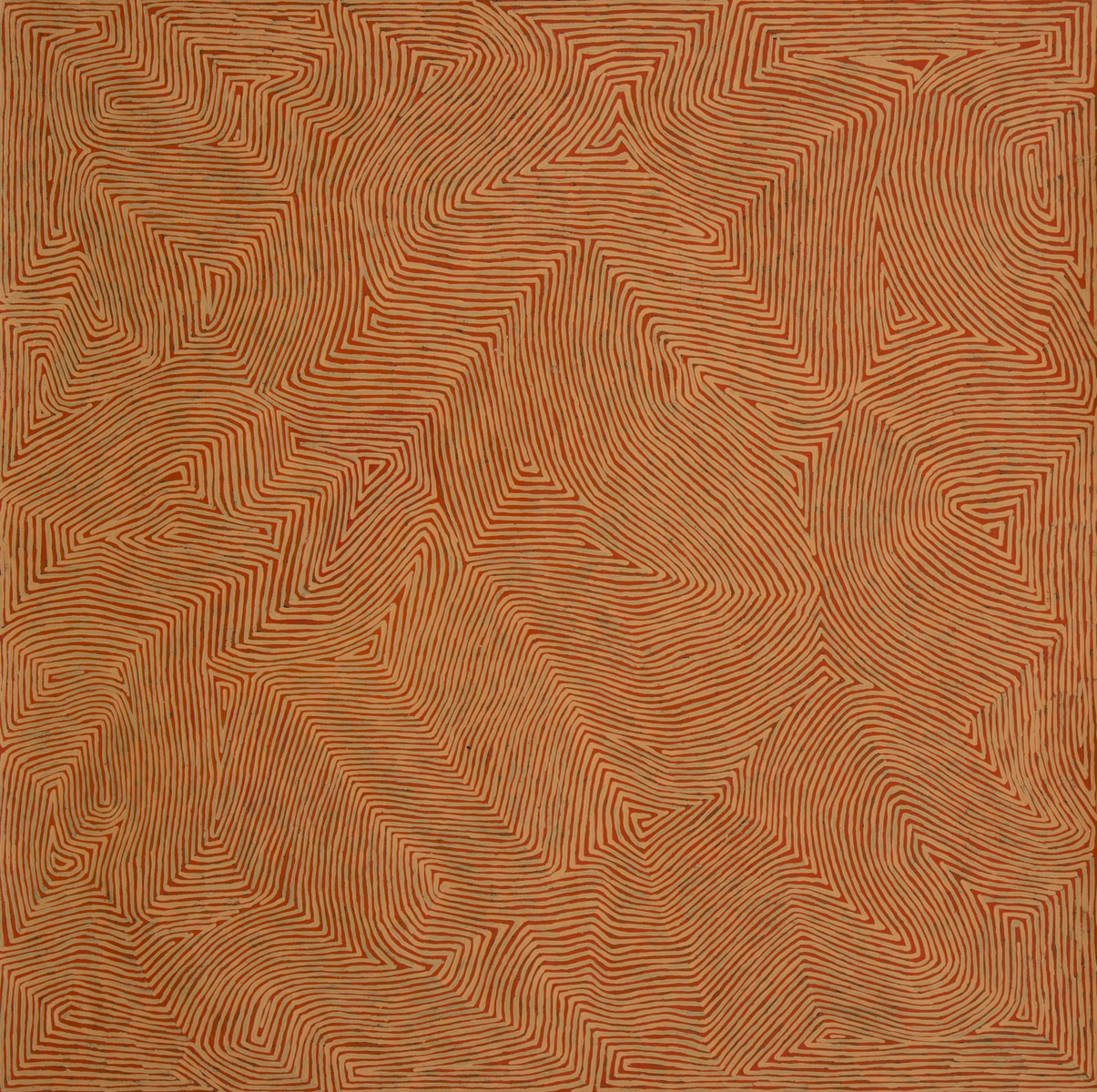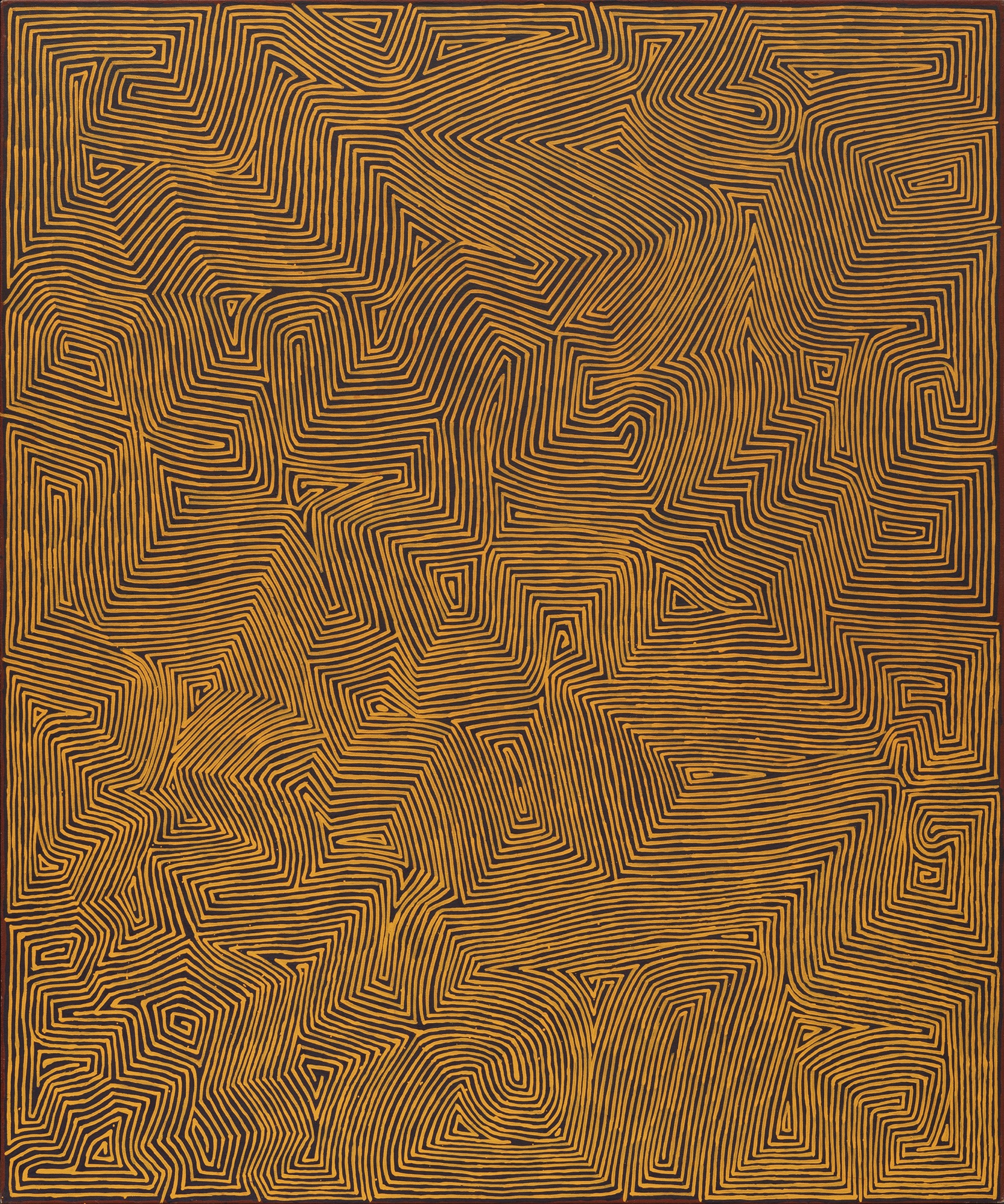31/05/2014 - 21/06/2014
To view exhibition catalogue please click here.
George Tjungurrayi
Unkunya
2012
acrylic on Belgian linen
122.00 x 91.00 cm
Papunya Tula Artists catalogue number GT1205095
Sold
WARLIMPIRRNGA TJAPALTJARRI
In 1984, a Pintupi family of nine, which included Warlimpirrnga Tjapaltjarri, emerged from a traditional nomadic life in remote Western Australia and into the communal fold of Kiwirrkura. Under unimaginable circumstances the family was isolated from outside contact for more than 22 years. Most accounts suggest that they remained in self-exile, waiting for contact from their relatives, who had earlier settled in communities throughout the Western Desert.
News of their arrival momentarily blazed on the front page of newspapers across Australia and around the world. For a country struggling with its identity, it was at once a miracle and an awkward reminder of the indigenous population’s enduring connection to the land. The community of Kiwirrkura closed ranks around the new arrivals, protecting them from increasingly intrusive government officials and journalists; a series of infringements during this time were perceived as a challenge to the social and cultural integrity of the Pintupi. This ultimately invigorated the new struggle to re-establish their autonomy on the land most had vacated two decades previously.
In his role as the senior male of the group, Warlimpirrnga became somewhat of a conduit between the family and outsiders. As anthropologists Bette Clark and Fred Myers, who were in Kiwirrkura at the request of the community, noted: ‘For his age, the oldest Tjapaltjarri [Warlimpirrnga] is particularly impressive for his authoritative, public role in decisions regarding the family.’ 1 He arrived in Kiwirrkura an initiated man, in full command of desert law and ritual. The circumstances of how this came to be are somewhat of a mystery and therefore it was assumed he was in possession of special capabilities. He and his younger brother, Piyiti Tjapaltjarri, despite their age, were known as powerful maparntjarra (doctor-men) 2., further elevating him among his desert kin…
In 1987, while manager of Papunya Tula Artists, Daphne Williams was on a routine field trip to Kiwirrkura. Warlimpirrnga approached her, requesting painting materials. Slowly over the coming months he produced a series of modest-sized circle and line depictions of Tingari ancestral stories. These initial paintings were hesitant, the artist obviously grappling with new materials under the keen instruction of relatives. Aware of their importance, as each work was completed, Daphne put it aside. This collection would later form the basis of his first solo exhibition at Gallery Gabrielle Pizzi in 1988, a mere four years after his arrival in Kiwirrkura. Ron and Nellie Castan subsequently generously donated the entire exhibition to the National Gallery of Victoria. Since that time, as his reputation has grown, his work has found particular appeal among collectors around the world lured by first contact art in the form of Oceanic artifacts, including shields, masks and weapons.
Sitting atop a vast ochred expanse of linen, he creates epic, barbed renderings that shimmer and gleam with the potency of the objects from which they are drawn; pearl shells and Kirritjinya (shields), the former known to be the prized possessions of traditional healers, of which Warlimpirrnga is one... an artist of immense capability, emboldened by a new authority and sense of obligation to depict the country of his ancestors. Throughout his development as an artist, Warlimpirrnga’s work has reflected the influence of some of the innovators of the Papunya Tula movement, including Kanya Tjapangati, Mick Namarari Tjapaltjarri, Ronnie Tjampitjinpa and George Tjungurrayi. The paintings, like Warlimpirrnga himself, have changed much with time…
GEORGE TJUNGURRAYI
In isolation, the minimal, seemingly abstract paintings of George Tjungurrayi could originate from anywhere. Removed from their desert home and thrust into the contemporary art paradigm, these highly evolved, sophisticated renderings of line and tone appear perpetually chic and assuredly global. It is perhaps not surprising then that these paintings and their maverick creator sit so awkwardly within the the restrictive expectations of the Aboriginal art movement. So confronting and non prescribed, so seemingly bereft of an Aboriginal aesethic, these paintings often provoke a rather accusatory question: ‘What is he trying to do?’ The inherent desire of the observer to ‘understand’ Aboriginal art remains a vital part of its appeal. In this instance however, the audience interest lies not only in what they can visually decipher, but the motivations of the artist.
This interest is undoubtedly due, in part, to the enigma surrounding Tjungurrayi. His reputation as a pedantic, difficult eccentric with a broad emotional range, is well known and again provokes comparisons with the great artists of the world. He is an exacting artist, obsessed with achieving his much revered optical shimmer with technique and colour, formulated not through the science of pigment and light, rather that of atmosphere and intuition. He will work and rework paintings, often camouflaging early tracings with new ideas and undoubtable certainty. However for all his absurd perfectionism and extreme peculiarities, he is a humanist of great proportion who, one way or another, effects all who meet him.
His recent trajectory as an artist should be framed within his emergence from the shadows of a cultural hierarchy of kin and country-men who dominated the cultural landscape of Kintore and Kiwirrkura for many decades. His paintings are in part the product of a local practice which evolved under the influence of late Mick Namarari Tjapaltjarri, Turkey Tolson Tjupurrula and Kanya Tjapangati.
The practice of painting for Tjungurrayi is essentially utilitarian. He, like many artists from the desert before him, aims to imbue his art with purpose and effect as a visual manifestation of an ancestral past. He sculpts paint in layered parallel lines to evoke the fluted groves of ceremonial objects or capture the flight of spears thrown through the air. Tightly wound, angular spirals of interlocking keys and mazes abut to reveal new and unforeseen mirage like shapes which float and shimmer above the surface. Other variations of curved and jagged meanders depict the bodies of ancestral snakes that carve a path on their journey through the desert sand. Most significant for the artist however, is the creative process itself. Which is considered as an attendance to and adherence of Pintupi men’s law, an opportunity to meditate upon the layered histories of creation and place. To be confronted by this singular vision which refuses to deviate or concede, it is a chance to immerse ourselves, to be compelled or repelled and to feel rather than see. There is a sense that Tjungurrayi has us right where he wants us, bewildered and in awe, suspended in a land we will never really know.
Luke Scholes
--
1. Clark, Bette & Myers, Fred, ‘Report on First Contact Group of Pintupi at Kiwirrkura.’ Report to Joint Working Party of Central Land Council and Department of Aboriginal Affairs, P38.
2. Clark, Bette & Myers, Fred, ‘Report on First Contact Group of Pintupi at Kiwirrkura.’ Report to Joint Working Party of Central Land Council and Department of Aboriginal Affairs, P23
To view exhibition catalogue please click here.

